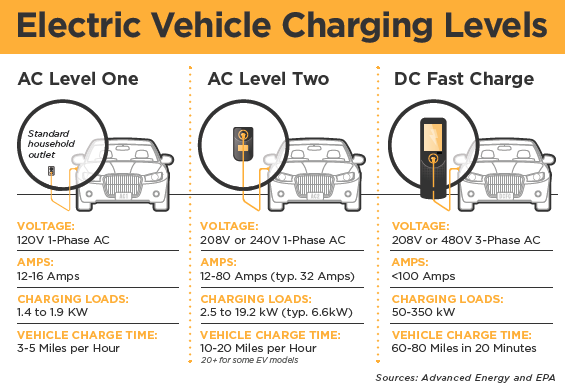Getting charged up about electric vehicles

There’s more buzz about electric vehicles (EVs) in rural areas, and EV charging infrastructure is currently being built across the country. You may not see them in your area yet, but they’re coming.
Batteries come in different sizes that provide different mileage ranges. Most people charge their EVs at home, but if you’re on a road trip, the U.S. Department of Energy estimates there are currently 50,000 EV charging sites.
Three levels
A new EV comes equipped for Level 1 (L1) charging, which simply plugs into a regular electrical outlet. This slowest-charging option will likely meet your needs if you don’t travel many miles per day, say 40 or less, or if your EV is a plug-in hybrid with a small battery. However, L1 is not practical for an all-electric EV with a 60 kilowatt-hour battery, for example.
Level 2 (L2) is the most common type of charging, operating on 240-volt power found in nearly every home. L2 can provide 100 miles of charge in several hours, and fully charge a large battery in eight to 10 hours. You may need to install a new circuit if you don’t have access to a 240-volt circuit. L2 charging is common at public sites, like grocery stores, libraries and workplaces.
Level 3 (L3) chargers require much more current and are not installed in homes. They are generally at specific EV charging sites and some gas stations. Some new EVs can accept 250 kilowatts or more and charge a battery from 10% to 80% in less than 20 minutes.
Electric co-ops around the country are working on programs to prepare for EV home charging, so contact your local electric co-op if you have questions about EVs and charging.
PAT KEEGAN and BRAD THIESSEN write on energy efficiency for the National Rural Electric Cooperative Association

